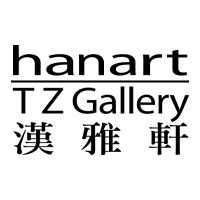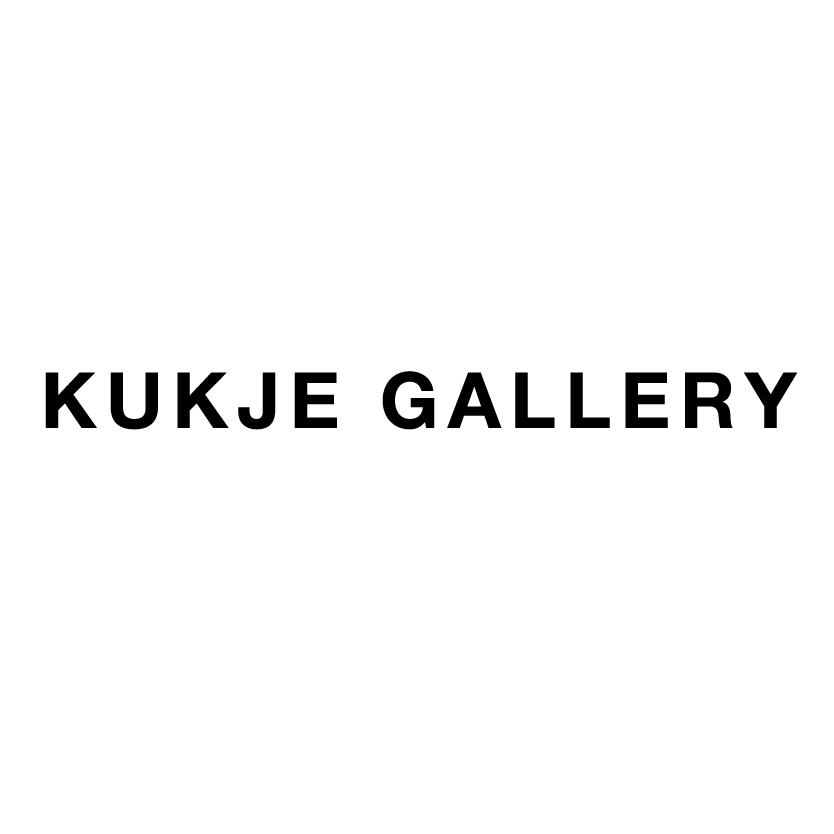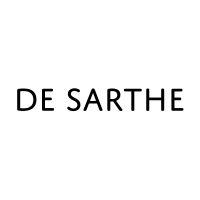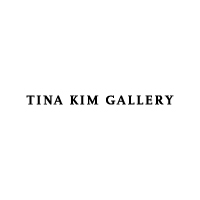Field Trip: 20th Biennale of Sydney – “The future is already here – It’s just not evenly distributed”
By HG Masters
What do modern dance, science fiction, the history of anthropology, homeopathy and astrology all have in common? Under the artistic direction of Stephanie Rosenthal, the 20th Biennale of Sydney looks at these and other concerns fueling contemporary artists today, broadly relating to two larger frameworks: historical structures of knowledge and contemporary social inequalities. The Biennale’s title, a quip borrowed from science-fiction writer William Gibson, “The future is here – it’s just not evenly distributed,” links these two concerns, as the artists themselves do in their works in myriad ways. In devising an artist-driven concept and structure, Rosenthal dubbed the six major venues as “Embassies,” each representing a place for thinking about certain topics, from “The Real” to “Translation,” “Spirits” and “Disappearance.” Linking these nodes were the “In Between Spaces,” projects situated in the city itself. Here’s an initial look around at the Biennale of Sydney. A full review will run in the May/June issue of ArtAsiaPacific.
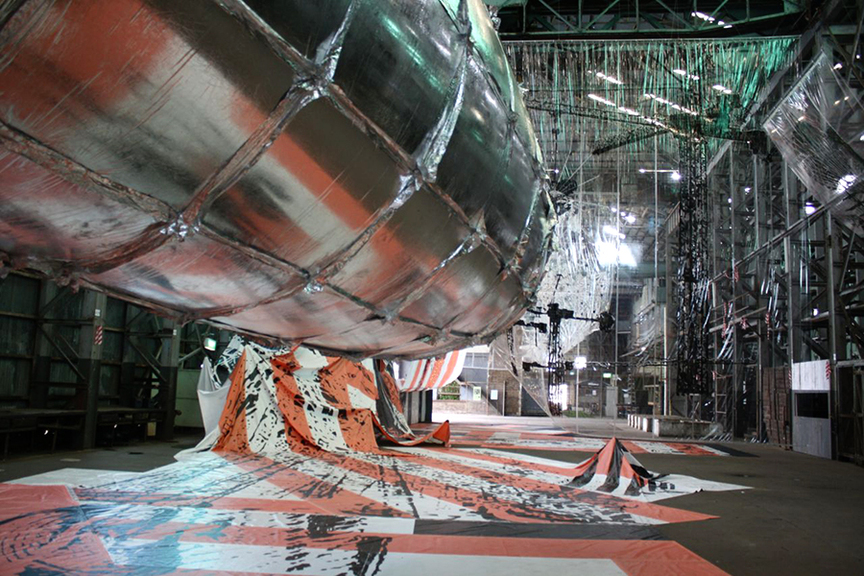
In the "Embassy of the Real," on Cockatoo Island in the Sydney Harbour, LEE BUL’s enormous installation Willing to Be Vulnerable (2016) featured mountains made from striped tarpaulins, a transparent hot-air balloon and a silver zeppelin.

An intimate, tender realism is conveyed by BHARTI KHER’s sculpture Six Women (2013-14), which are full-body plaster casts that Kher made in New Delhi of women who all work in the sex industry.
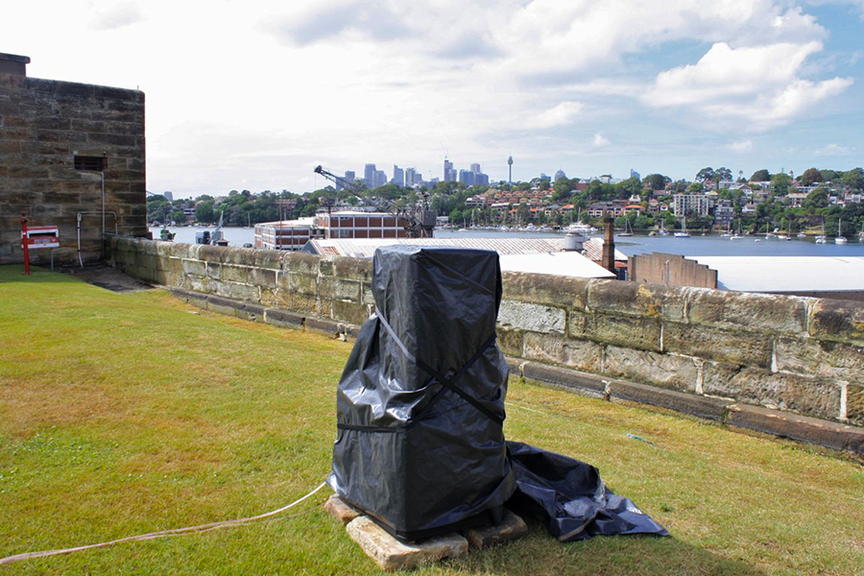
CEVDET EREK’s sound installation Room of Rhythms – Long Distance Relationship
(2016) comprises a field of speakers in the Guards House and Annexe on
Cockatoo Island, each emitting beats that collectively become a spatial
composition in sound.
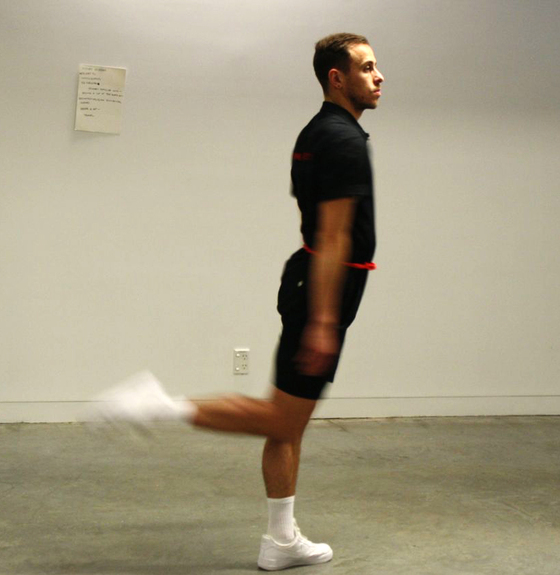
Dancer-choreographer ADAM LINDER performing at the Museum of Contemporary Art. His project Some Proximity (2016) involves Linder and collaborator Justin Kennedy reading aloud and interpreting a script composed by a writer.

Dancer-choreographer ADAM LINDER performing at the Museum of Contemporary Art. His project Some Proximity (2016) involves Linder and collaborator Justin Kennedy reading aloud and interpreting a script composed by a writer.
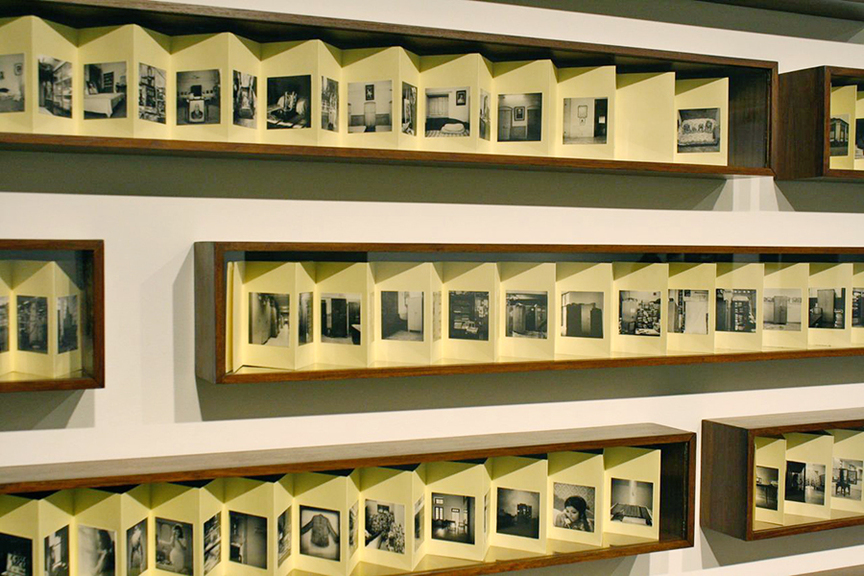
Also at the MCA in the "Embassy of Translation" is DAYANITA SINGH’s Kitchen Museum
(2015), a series of her own photographs reprinted and made into
accordion books. In recent years, Singh has become as interested in
forms of presenting her works as the images themselves.
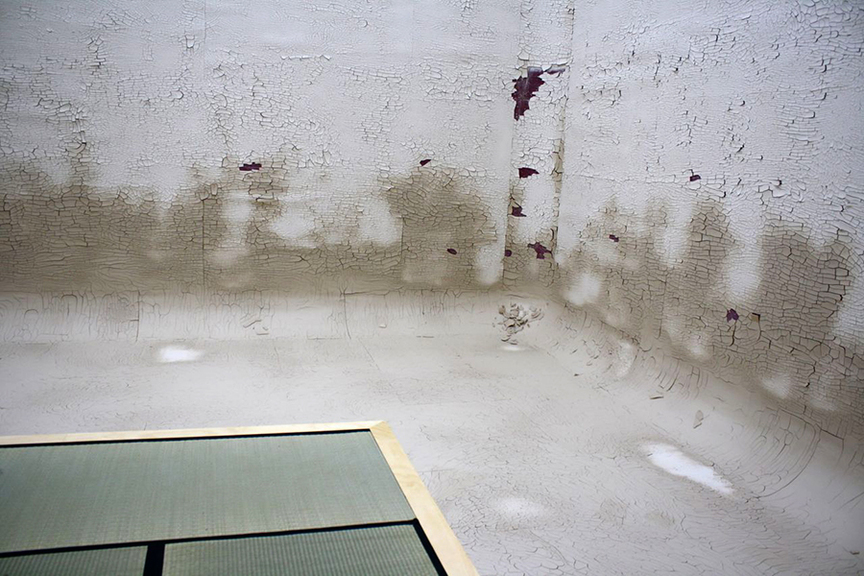
The Art Gallery of New South Wales hosts the "Embassy of Spirits," and TARO SHINODA’s incredible installation Abstraction of Confusion (2016),
a room entirely covered (from floor to wall) in white clay. The piece
was inspired by a visit to Yirrkala, Arnhem Land, and underneath the
clay is red ochre pigment. Shinoda built a viewing platform into the
middle of a room so that you can immerse yourself in the piece.
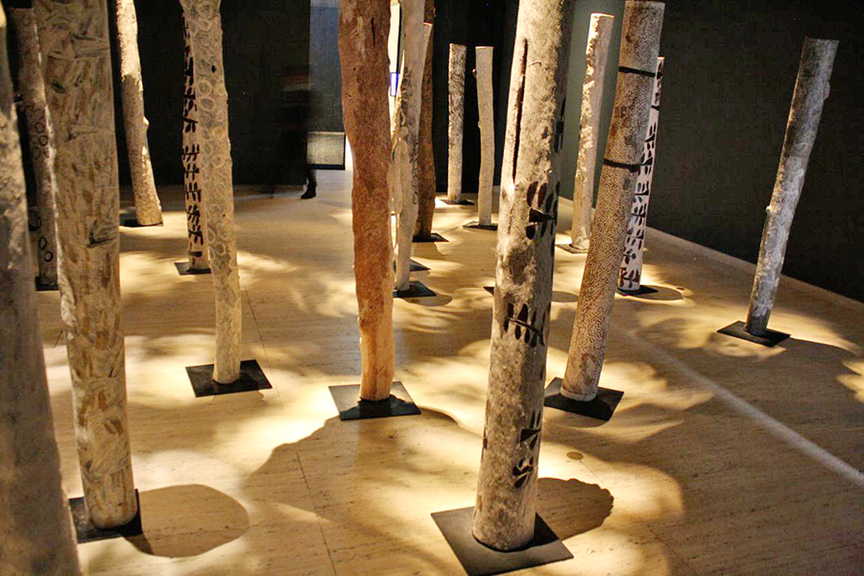
"The Embassy of Spirits" also hosted NYAPANYAPA YUNUPINGU’s dream-like space of carved and painted wooden poles, which is covered in the artist’s expressive, spontaneous marks.
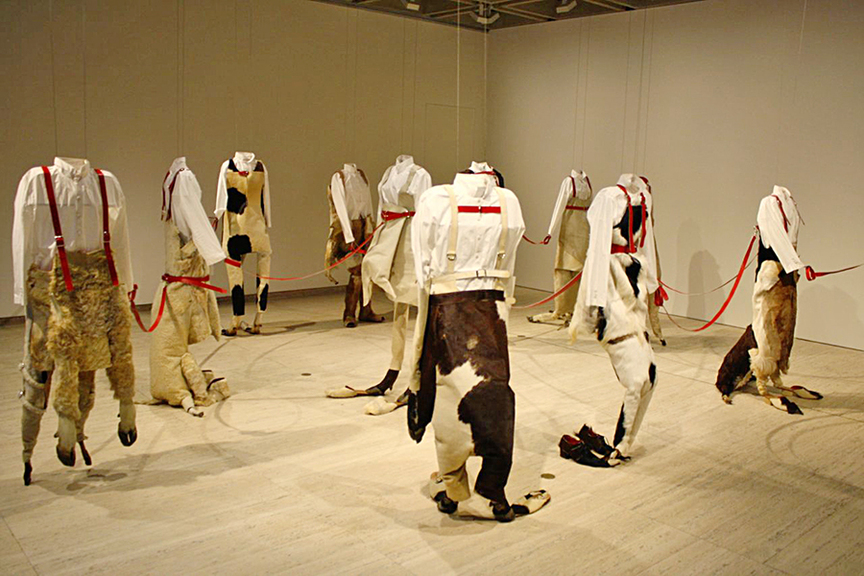
Yogyakarta-based MELLA JAARSMA’s work with costumes has only grown richer and more experimental in recent years, and Dogwalk
(2015-16) is the latest piece to explore cultural identities and
personal relationships through clothing. The animal skins of these
costumes come from cows, sheep and goats sacrificed during Muslim
holidays, and make their wearers resemble dogs, considered "unclean" (or
haram) in Islam, and the animal to which humans have the most complicated relationship.

One of the "In Between" projects is this aborted sculpture of two medical autopsy tables, meandering – black wall (2016) by OSCAR MURILLO,
quite literally situated in between two buildings in Chippendale. The
plan had been to hang a black painting and grow corn here, but the
artist diverted his project by tearing up his UK passport en route to
Sydney, and subsequently was deported by Australia back to his native
Columbia, via Singapore and Barcelona.
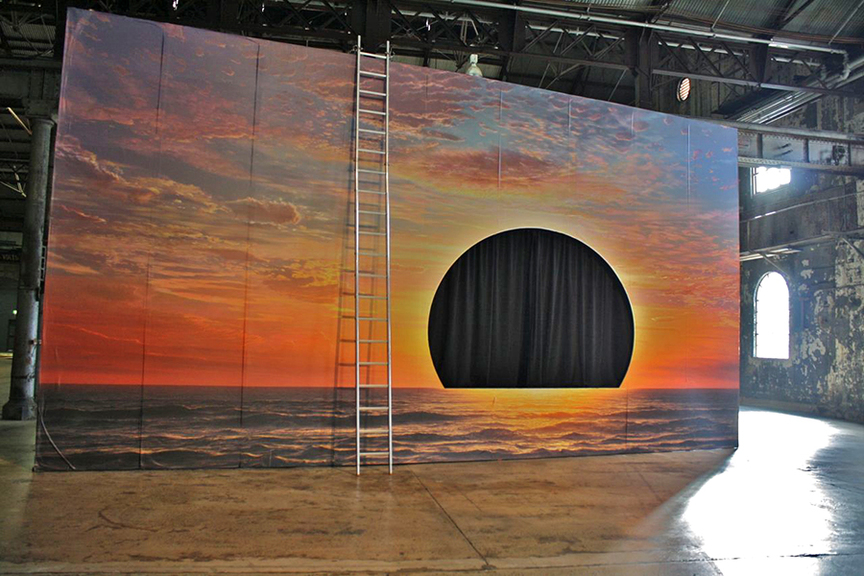
The multidisciplinary art space Carriageworks has been reincarnated as the "Embassy of Disappearance." Seen here is NEHA CHOKSI’s Sun Rehearsal
(2016), a billboard-sized image of a setting sun, with seven others
images layered underneath. Using the ladder, the images will be
successively stripped down revealing the others underneath, over the
course of the Biennale.

Another image soon to disappear is LEE MINGWEI’s Guernica in Sand
a rendition of Picasso’s famous anti-war painting from 1937. Even
though it takes days to create this image in colored sand, on April 23,
the public will be allowed to walk across it before the image is brushed
away completely.

FX HARSONO’s Ranjang Hujan (The Raining Bed) (2013) recalls the history of the Chinese-Indonesian Tionghoans
community, through this Peranakan bed with water pouring down on the
letters that say "In my sleep the past unfolds / At the tip of the pen
history is invented / At the tip of the rifle history is fooled / by the
end of the falls history is swept away."
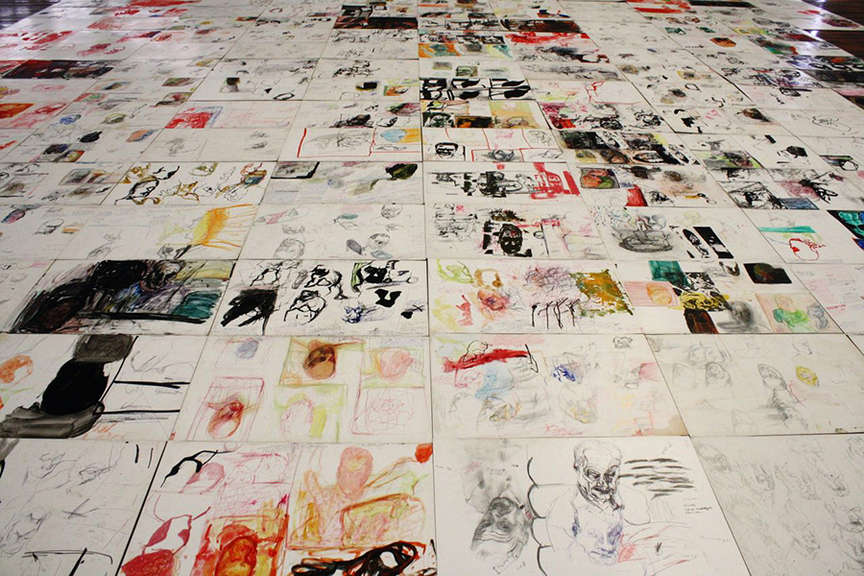
MIKE PARR’s The side I least like (1998-2013)
is an installation of 164 drawing boards containing self-portraits,
notes, doodles, performance scripts and a collection of visual materials
the artist calls "unconstrained in every respect."

RICHARD BELL’s Embassy
(2013), positioned outside the Museum of Contemporary Art, Sydney, at
the beginning of the Biennale, served as site for conversations about
Indigenous rights. It refers to the "Aboriginal Embassy," a series of
structures that activists have maintained on the Parliament lawn in
Canberra since 1972.
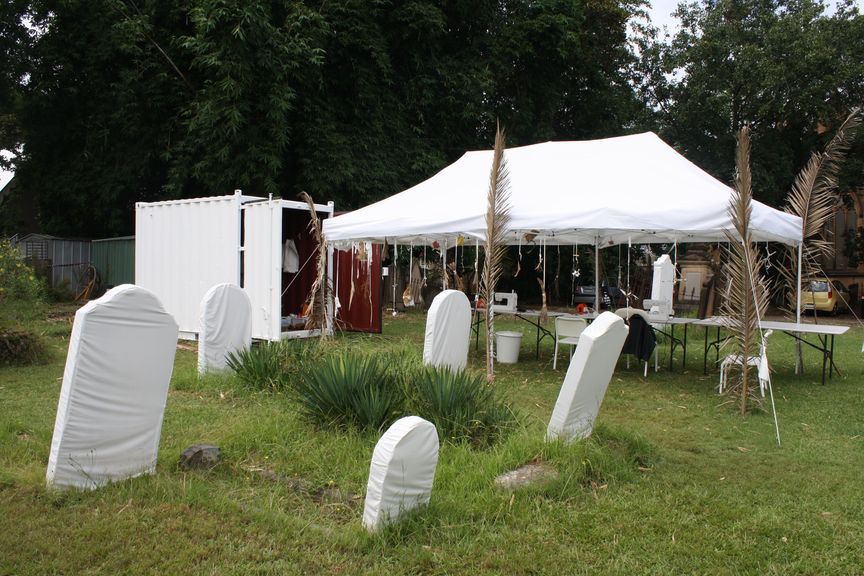
At the Camperdown Cemetery, BO CHRISTIAN LARSSON set up a sewing workshop and is making white hoods to cover all of the headstones in his performative installation Fade Away, Fade Away, Fade Away (2016).

Located in the fast-gentrifying district of Redfern, KEG DE SOUZA’s We Built this City
(2016) is a structure made from tents that will house the artist’s
social-workshop project, the "Redfern School of Displacement."

Just down the street from Keg de Souza’s project is DANIEL BOYD’s What Remains (2016), more than 12,000 tiny circular mirrors placed on a black-painted wall in a historically Indigenous neighborhood.
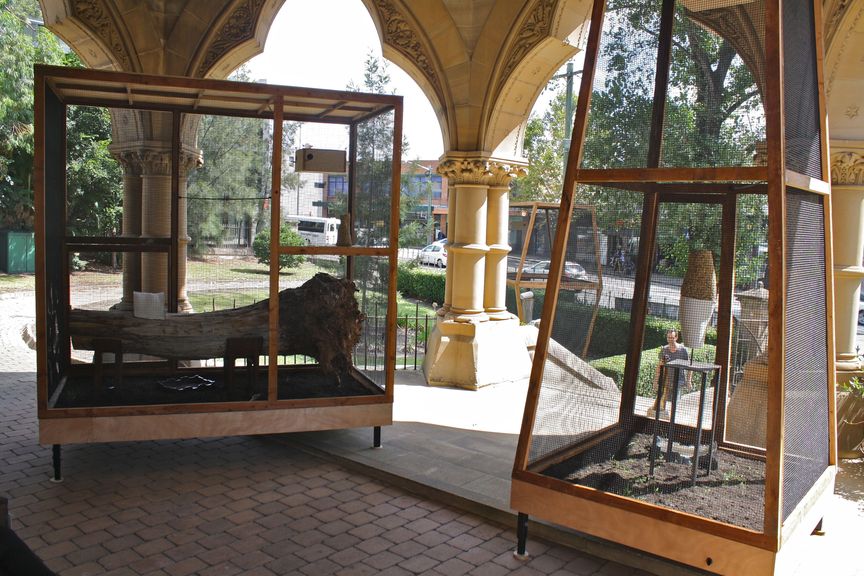
At the Mortuary Station, MARCO CHIANDETTI
created these palatial aviaries with parts of his body cast in
birdseed. The intended residents were the Common Myna bird, an invasive
species imported in the late 19th century from southeast Asia where it
is referred to as "The Messengers of God." Unfortunately, Sydney
authorities had not authorized the birds to be used in Chiandetti’s
piece, with a title taken from Edgard Allen Poe, The boundaries which
divide Life from Death are at best shadowy and vague. Who shall say
where the one ends, and where the other begins? (2016)

On the former Mortuary Station platform, where bodies were taken by
train from central Sydney to cemeteries outside of the city, CHARWAI TSAI’s Spiral Incense Bardo (2016) uses a Tibetan text written onto incense to coils to encourage lingering spirits to release their hold on life.
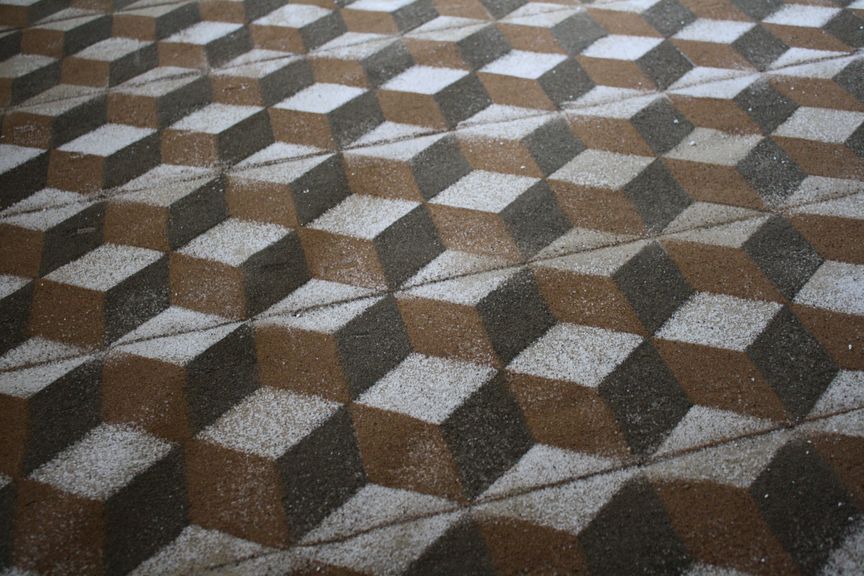
Miguel Angel Rojas’s floor installation Piedra en el Zapato (2016) mimicks Cordoba tiles but is made from sand, salt, lime and gold.

ALEXIS TEPLIN’s absurdist three-person play Arch (The Politics of Fragmentation),
(2016), was modeled on Safdar Hashmi’s communist-street-theater with
costumes and paintings referencing Roberto Rossellini’s 1950 film The Flowers of St. Francis.
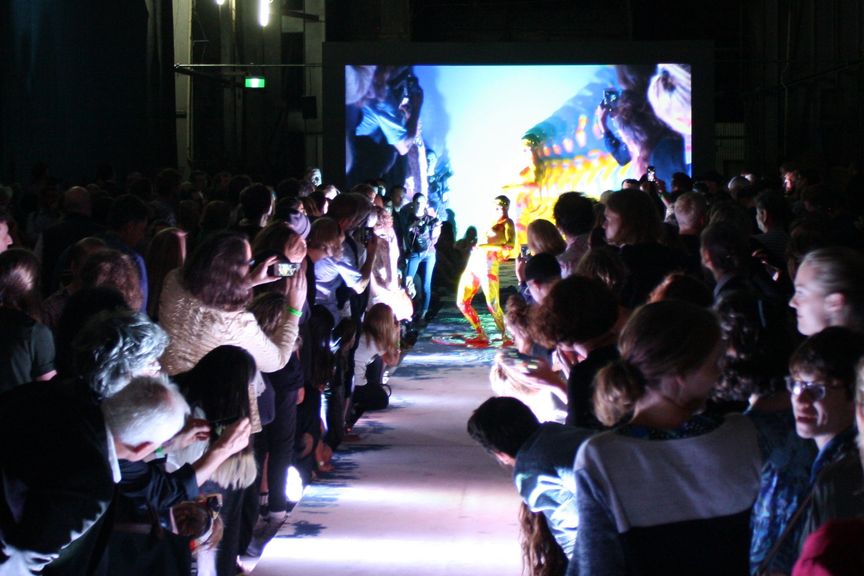
An opening night event by transgendered performer boychild took place on a runway of bleached denim designed by KORAKRIT ARUNANONDCHAI, Painting with history in a room filled with people with funny names 3, (2015-16).
HG Masters is editor-at-large for ArtAsiaPacific.



